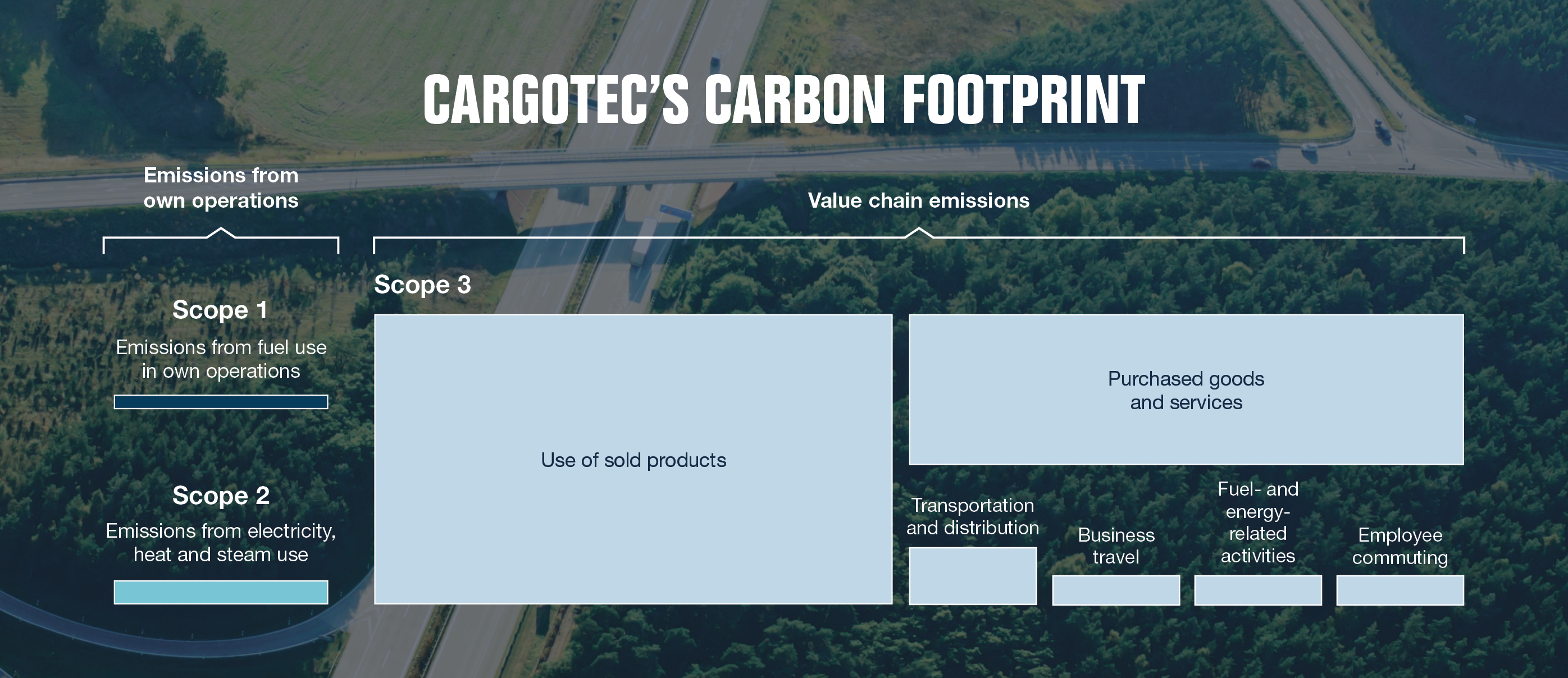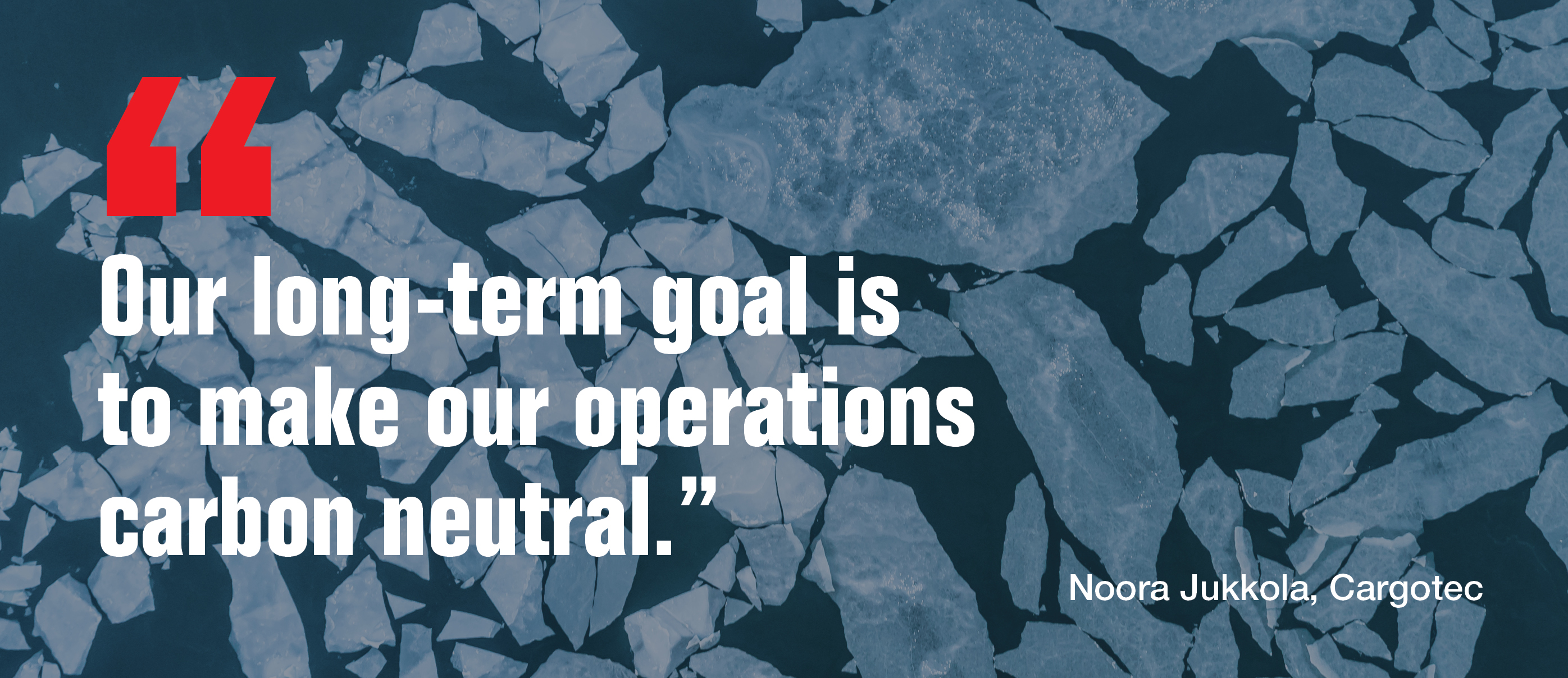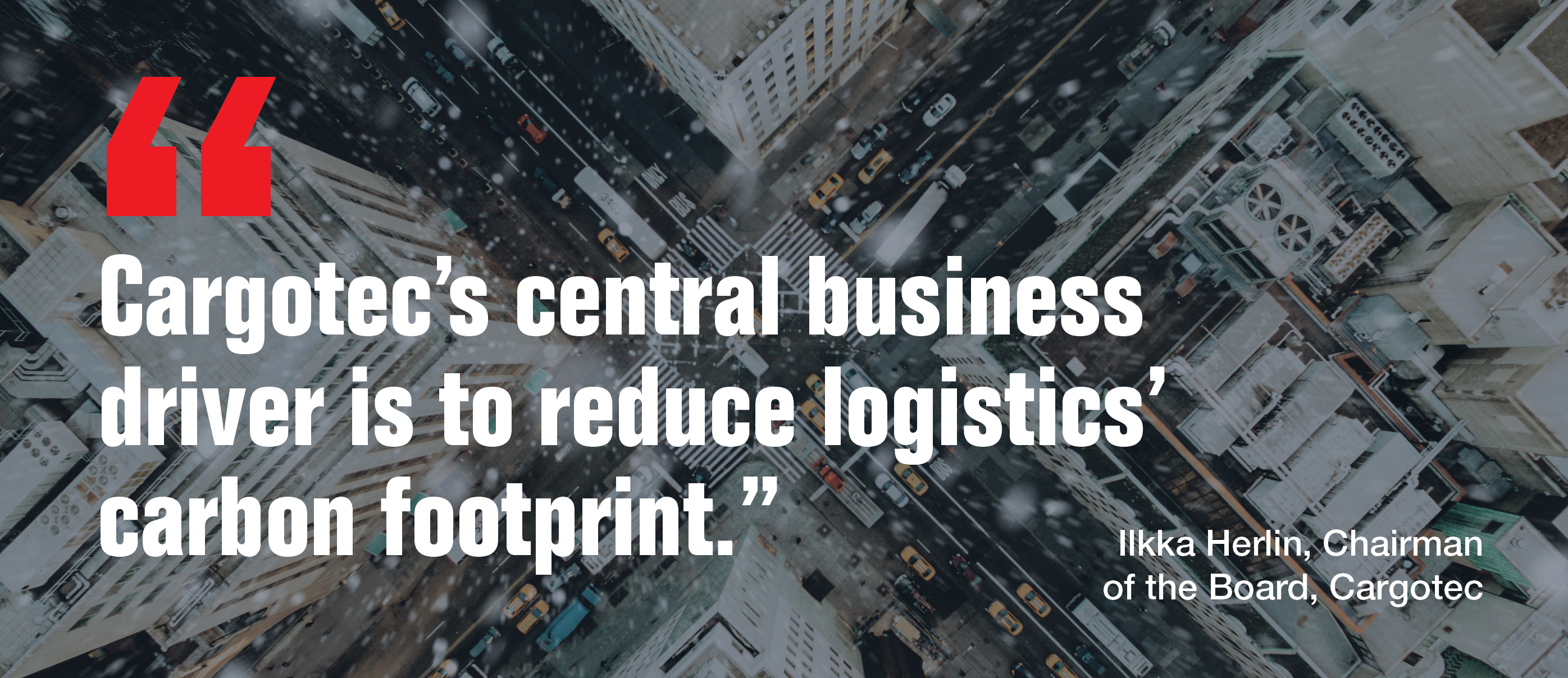Cargotec’s journey towards carbon neutrality has begun – and we want you to join us
04.06.2020
As climate research continues to identify necessary industrial changes, logistics companies must decide how to act. Through bold and decisive climate action, Cargotec has shown that a serious commitment to sustainability is not a limitation on innovation, but rather the opposite.
While Cargotec is inextricably linked to the industries that generate most global GDP, these industries also generate the most greenhouse gas (GHG) emissions. Trade-related freight alone, for example, is estimated to account for over seven percent of global CO2 emissions (OECD/ITF 2015).
In order to increase transparency and clarity in reporting, many logistics companies have therefore adopted reporting standards created by the Greenhouse Gas Protocol, a partnership between the World Resources Institute (WRI) and the World Business Council for Sustainable Development (WBCSD). Under this framework, emissions can be categorised into three groups – Scope 1, Scope 2, and Scope 3.

Scope 1 covers direct emissions from an organisation’s owned or controlled sources. Scope 2 covers indirect emissions from the generation of purchased electricity, steam, heating and cooling consumed by an organisation. Scope 3 emissions are the most extensive standards currently possible – they include all of the indirect emissions (not included in Scope 2) that occur in the value chain of the organisation, including both upstream and downstream emissions.
Leading by example through Scope 3 management
Cargotec has already committed to Scope 3 reporting. “Last year, we initiated a comprehensive Scope 3 GHG emission calculation,” says Noora Jukkola, Sustainability Manager at Cargotec. “We screened all of the Scope 3 emissions categories and identified purchased goods and services and use of sold products as the biggest sources.”

Calculations showed that a significant share of the company’s total emissions come from the use of sold products due to long lifetimes and diesel engines, with purchased goods and services as the second-largest category. One of the key findings, however, was that the use of sold products and purchased goods and services represent more than 95 percent of all of Cargotec’s Scope 3 emissions.
Cargotec has chosen a challenging yet decisive route. “Not all companies have calculated Scope 3 emissions because they’re not easy to calculate,” says Jukkola. “We want to improve the accuracy of our calculations and to be able to compare them year-to-year, so we are refining them. Ideally, we would like to disclose the remaining emission categories as soon they have been calculated.”
Commitment to the 1.5°C warming scenario
Alongside the GHG Protocol, some companies are also aligning their operations with climate science. Published in 2018 by the Intergovernmental Panel on Climate Change (IPCC), the report sets out that in order to minimise the effects of global warming to 1.5°C, there would need to be “rapid, far-reaching and unprecedented changes in all aspects of society.”
These changes include a serious and systematic reduction in emissions, to which Cargotec has already pledged. “Setting science-based targets is the right thing to do, and so we have committed ourselves to restricting climate change to the 1.5°C warming scenario set out in SR15 in 2018,” says Jukkola. “That scenario, and beyond the requirements of the Paris agreement.”
“What the world needs is a huge reduction,” says Jukkola. “We want to engage as we can't deliver on our targets without the help of suppliers and customers. We are committed to an absolute reduction, and we are still working on how that can be done in practice. The reduction target for Scope 3 emissions is 50 percent by 2030, with a baseline of 2019 levels. Our goal for 2030 is to make our operations carbon-neutral.”
Taking suppliers and customers on a climate journey
Currently, 55 percent of the world’s population is urbanised. In a few decades, that figure will be closer to 70 percent. As urbanisation is set to increase, so too will the demand for logistical solutions, and these solutions will need to be considerably more environmentally friendly. To help plan for this future, Kalmar announced its commitment in 2018 to provide electric-powered versions of its full offering by 2021.
Hiab, for example, has been developing load handling solutions such as the MOFFETT truck mounted forklift. The MOFFETT E-Series is the world’s first lithium-ion battery-powered truck mounted forklift and does not emit exhaust gases. The E-Series is ideal for moving goods from outside to inside, such as warehouses and distribution centres. Its near-silent operation makes it suitable for urban distribution and night-time or out-of-hours deliveries. Hiab’s customers received this commitment well and have since begun switching to electric or hybrid solutions.
“If we want to stand the best chance of curbing climate change, of making a systemic change, we must take our suppliers and customers on a climate journey with us, and that includes the emissions from the operations of our customers,” says Jukkola.
“In 2017, we launched our ‘Offering for Eco-Efficiency’ portfolio, which consists of solutions that enhance our customers’ sustainability with cleaner technologies, software solutions or circular economy-based solutions. We have regularly added solutions to the portfolio, and in 2019, it constituted 21 percent of our total sales. This shows that sustainability is not only good for the environment, it is also good for business.”

Better innovation through sustainability
In March 2019, DP World – one of the world’s leading operators of marine and inland terminals – ordered 63 Kalmar hybrid straddle carriers for its European container terminals. Compared to traditional machines, the straddle carriers operate with significantly reduced fuel consumption and CO2 emissions.
Similarly, MacGregor designed the cargo system and supplied the majority of components for the world’s largest container ship, MSC Gülsün, whose capacity is over 23,000 TEU. The design was developed in close collaboration with MSC to maximise cargo intake, provide for a high degree of operational flexibility, and reduce emissions per unit of cargo carried.
This focus on sustainability has not limited Cargotec’s innovation, but rather accelerated it. "Cargotec is and always has been about value creation," concludes Ilkka Herlin, Chairman of the Board of Directors at Cargotec. “Our central business driver is to reduce the carbon footprint of logistics."
